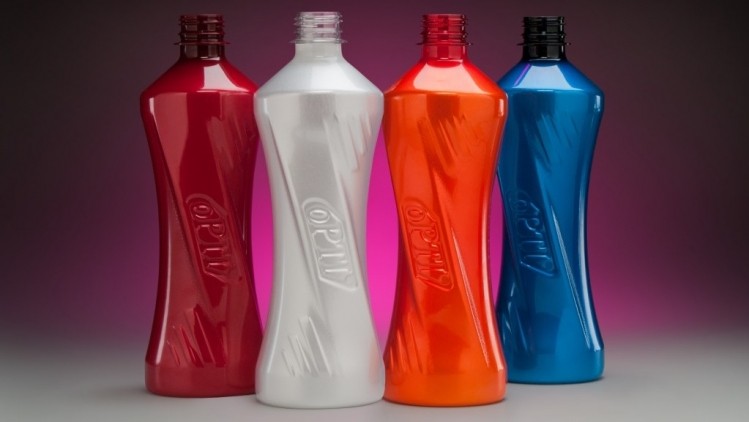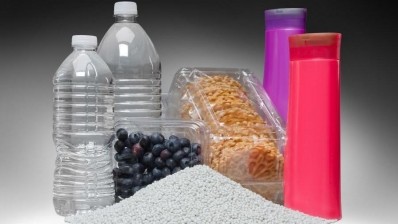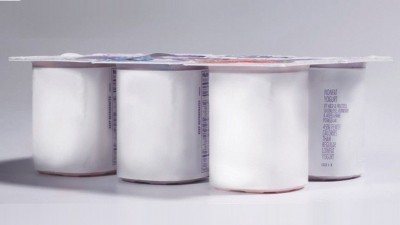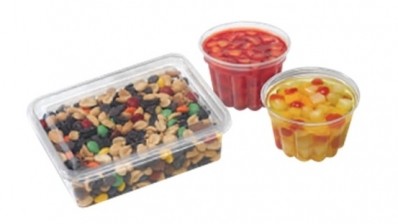Packaging partnership unveils PET with a twist

Ohio-based Plastic Technologies (PTI), which specializes in development of PET packaging, is working to launch its oPTI PET bottles. The containers are geared toward beverage and food brands seeking brand differentiation through more visual, tactile packages.
Two German firms are pitching in. The Foboha cube mold system is designed to maximize cavitization and minimize cost for overmolded parts. The cube-mold system is coupled Ferromatik Milacron’s injection molding platform, reportedly resulting in an increased number of cavities in the mold, increasing the output.
Ron Puvak, PTI’s director of marketing, spoke with FoodProductionDaily about the packaging’s production benefits, branding possibility, and sustainable properties.
What differentiates oPTI PET from conventional PET?
The oPTI process can use any standard PET bottle-grade resin—the difference is what we do to the resin during the injection process that makes it unique. Since PET is a highly recyclable material, the objective is to keep all of those attributes; one of the big benefits of oPTI technology is it creates an attractive and highly-differentiated container without negatively impacting its recyclability.
Also, oPTI provides food and beverage brand owners with a broader range of PET container aesthetics and performance capabilities than previously possible. For example, the process enables white or silvery colored bottles to be made without additives to limit package recycling.
White oPTI bottles provide an environmentally friendly option to conventional bottles which use additives to achieve a similar tint. Instead of being a contaminant to the clear recycling stream, white foamed bottles will mold into a transparent bottle after remelting and subsequent processing.
In addition to white or silver, blue and green hues also can be used, since those color streams already exist in traditional PET recycling. The technology also is capable of producing bottles in a variety of pastel colors (amber, yellow, pink, etc.); however, these cannot be recycled as part of the clear PET stream.
Other key attributes: containers also have a unique surface feel and provide tactile “traction,” minimizing slipping. The process also blow-molds details more prominently, which enabling decorations (such as embossed logos) to stand out better.
Because the foam process adds stiffness, lightweighting of up to 5% is also feasible without significant loss of performance. The technology can produce bottles with significant light-barrier characteristics, with up to 95% reduction in transmitted light.
The overmolded oPTI bottle can deliver point-of-sale differentiation coupled with performance attributes at a cost significantly lower than single-use aluminum bottles, for example. The dual-layer structures also enable optimization of barrier attributes; an oxygen barrier can be added to the inner layer, while the outer can include a carbon dioxide barrier.
Are there any challenges to producing containers with this material?
No, there are no real challenges. The process is done in the injection-molding part of the two-stage reheat blow process. We can easily injection-mold the preform, then blow the final package.
The bottles are made in four basic steps: nitrogen is injected into the melt through the barrel on a modified perform molding machine to form a single-phase solution of polymer and gas, then foam is produced as cavity-fill pressure is dropped below nucleation pressure during the injection cycle.
Foam cells expand as gas is diffused into bubbles; processing conditions are used to control cell growth in the finished perform. The preforms are blow-molded on conventional, unmodified blow molding machines to produce the foam bottles.
What products is this material best suited for?
Ideal applications include foods, beverages (wine, spirits, beer, juice, nutriceuticals, etc.) health and beauty aids, cosmetics, etc. Many PET containers using high levels of colorants or that need an opaque look can use the oPTI technology; it can also be a replacement for some high end metal packaging.








